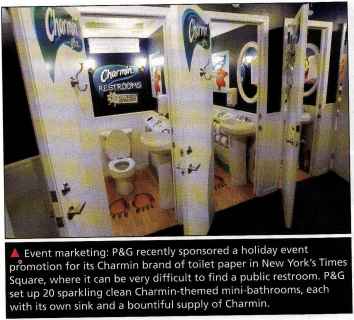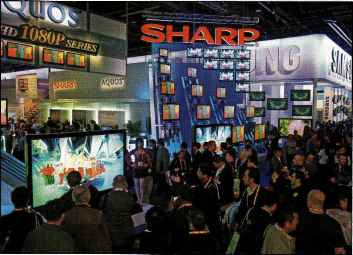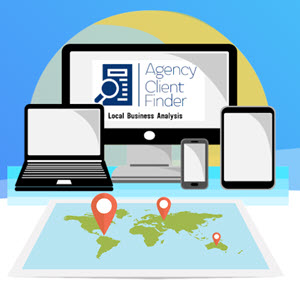Info Mcd
New forms of coupons: Cellfire distributes digital coupons to the cell phones of consumers who sign up for its free service.
bring them along when they shop. They always have their cell phone coupons with them. For marketers, mobile coupons allow more careful targeting and eliminate the costs of printing and distributing paper coupons. "We don't pay for distribution of digital coupons," says one client. "We pay on redemptions." And the redemption rates can be dazzling. According to Cellfire's chief executive, "We're seeing redemption rates as high as 10 to 15 percent, while the industry average paper response is ... less than 1 percent."
Cash refunds (or rebates) are like coupons except that the price reduction occurs after the purchase rather than at the retail outlet. The consumer sends a "proof of purchase" to the manufacturer, who then refunds part of the purchase price by mail. For example, Toro ran a clever preseason promotion on some of its snowblower models, offering a rebate if the snowfall in the buyer's market area turned out to be below average. Competitors were not able to match this offer on such short notice, and the promotion was very successful.
Price packs (also called cents-off deals) offer consumers savings off the regular price of a product. The producer marks the reduced prices directly on the label or package. Price packs can be single packages sold at a reduced price (such as two for the price of one), or two related products banded together (such as a toothbrush and toothpaste). Price packs are very effective—even more so than coupons—in stimulating short-term sales.
Premiums are goods offered either free or at low cost as an incentive to buy a product, ranging from toys included with kids' products to phone cards and DVDs. A premium may come inside the package (in-pack), outside the package (on-pack), or through the mail. For example, over the years, McDonald's has offered a variety of premiums in its Happy Meals—from Teeny Beanie Babies to Speed Racers. For the past two years, the fast feeder has featured American Idol [reality TV]-inspired musical toy characters in its Happy Meals, each representing a favorite music genre. Customers can visit www.happymeal.com to choose their favorite character, whether it's Rockin' Riley, Lil' Hip Hop, Country Clay, Soulful Selma, or Punky Pete. The promotion also includes a chance to win a trip to see the season finale of American Idol live in Los Angeles.34
Advertising specialties, also called promotional products, are useful articles imprinted with an advertiser's name, logo, or message that are given as gifts to consumers. Typical items include T-shirts and other apparel, pens, coffee mugs, calendars, key rings, mouse pads, matches, tote bags, coolers, golf balls, and caps. Such items can be very effective. The "best of them stick around for months, subtly burning a brand name into a user's brain," notes a promotional products expert.35
Point-of-purchase (POP) promotions include displays and demonstrations that take place at the point of sale. Think of your last visit to the local specialty store you frequent. Chances are good that you were tripping over aisle displays, promotional signs, "shelf talkers," or demonstrators offering free tastes of featured food products. Unfortunately, many retailers do not like to handle the hundreds of displays, signs, and posters they receive from manufacturers each year. Manufacturers have responded by offering better POP materials, offering to set them up, and tying them in with television, print, or online messages.
Contests, sweepstakes, and games give consumers the chance to win something, such as cash, trips, or goods, by luck or through extra effort. A contest calls for consumers to submit an entry—a jingle, guess, suggestion—to be judged by a panel that will select the best entries. A sweepstakes calls for consumers to submit their names for a drawing. A game presents consumers with something—bingo numbers, missing letters—every time they buy, which may or may not help them win a prize. Such promotions can create considerable brand attention and consumer involvement.36
Doritos [snack food] recently ran a "Get It. Taste It. Name It" sweepstakes asking consumers to taste its newest flavor, initially labeled X-13D, and then suggest a name and write an ad for it. Those who submitted a name or ad were entered into the sweeps to become one of 100 Doritos Flavor Masters. Winners were selected through a random drawing. As Flavor Masters, the 100 grand-prize winners got the chance to take part in Doritos research and development, giving feedback on future flavor ideas. Each also got a year's supply of Doritos, 52 coupons good for one bag per week. The X-13D chips, packaged in a black bag with a label that looked like it's lifted from a science lab,

Event marketing
Creating a brand-marketing event or serving as a sole or participating sponsor of events created by others.
Event marketing: P&G recently sponsored a holiday event promotion for its Charmin brand of toilet paper in New York's Times Square, where it can be very difficult to find a public restroom. P&G set up 20 sparkling clean Charmin-themed mini-bathrooms, each with its own sink and a bountiful supply of Charmin.
built a lot of buzz. The promotion pulled in more than 100,000 entries within only a month of launch. And the promotion sparked considerable online chatter as blog-gers wrote about stumbling upon the distinctive bag in convenience stores and tackled the question of what the flavor really was.
Finally, marketers can promote their brands through event marketing (or event sponsorships). They can create their own brand-marketing events or serve as sole or participating sponsors of events created by others. The events might include anything from mobile brand tours to festivals, reunions, marathons, concerts, or other sponsored gatherings. Event marketing is huge, and it may be the fastest-growing area of promotion.37
Most companies sponsor brand events. Motorcycle maker Harley-Davidson holds "HOG Rallies" and Harley biker reunions that draw hundreds of thousands of bikers each year. The cell-phone provider Sprint is paying $700 million over 10 years to sponsor a car racing series. And beverage makers Coca-Cola, Anheuser-Busch, the cable TV channel Nickelodeon, and others jointly sponsor Carnival Miami's culminating event, Calle Ocho, said to be the largest annual celebration of Hispanic culture in the United States. A Procter & Gamble creates numerous events for its major brands. Consider this example:
P&G recently sponsored a holiday event promotion for its Charmin brand [toilet paper] in New York's Times Square, where it can be very difficult to find a public restroom. For the second year running, P&G set up 20 sparkling clean Charmin-themed mini-bathrooms, each with its own sink and a bountiful supply of Charmin. The event turned out to be the ultimate in experiential marketing—touching people in places advertising wouldn't dare to go. More than 420,000 people gratefully used the facilities and privately voted for the Charmin they preferred (Charmin Ultra Soft or Ultra Strong).38
Trade promotions
Sales promotion tools used to persuade resellers to carry a brand, give it shelf space, promote it in advertising, and push it to consumers.
Business promotions
Sales promotion tools used to generate business leads, stimulate purchases, reward customers, and motivate salespeople.
Trade Promotions
Manufacturers direct more sales promotion dollars toward retailers and wholesalers (81 percent) than to final consumers (19 percent).3' Trade promotions can persuade resellers to carry a brand, give it shelf space, promote it in advertising, and push it to consumers. Shelf space is so scarce these days that manufacturers often have to offer price-offs, allowances, buy-back guarantees, or free goods to retailers and wholesalers to get products on the shelf and, once there, to keep them on it.
Manufacturers use several trade promotion tools. Many of the tools used for consumer promotions—contests, premiums, displays-can also be used as trade promotions. Or the manufacturer may offer a straight discount off the list price on each case purchased during a stated period of time (also called a price-off, off-invoice, or off-list). Manufacturers also may offer an allowance (usually so much off per case) in return for the retailer's agreement to feature the manufacturer's products in some way. An advertising allowance compensates retailers for advertising the product. A display allowance compensates them for using special displays.
Manufacturers may offer free goods, which are extra cases of merchandise, to resellers who buy a certain quantity or who feature a certain flavor or size. They may offer push money—cash or gifts to dealers or their sales forces to "push" the manufacturer's goods. Manufacturers may give retailers free specialty advertising items that carry the company's name, such as pens, pencils, calendars, paperweights, matchbooks, memo pads, and yardsticks.
Business Promotions
Companies spend billions of dollars each year on promotion to industrial customers. Business promotions are used to generate business leads, stimulate purchases, reward customers, and motivate salespeople. Business promotions include many of the same tools used for consumer or trade promotions. Here, we focus on two additional major business promotion tools—conventions and trade shows, and sales contests.
Many companies and trade associations organize conventions and trade shows to promote their products. Firms selling to the industry show their products at the trade show. Vendors receive many benefits, such as opportunities to find new sales leads, contact customers, introduce new products, meet new customers, sell more to present customers, and educate customers with publications and audiovisual materials. Trade shows also help companies reach many prospects not reached through their sales forces.
Some trade shows are huge. A For example, at this year's International Consumer Electronics Show, 2,700 exhibitors attracted more than 141,000 professional visitors. Even more impressive, at the BAUMA mining and construction equipment trade show in Munich, Germany, some 3,000 exhibitors from 49 countries presented their latest product innovations to more than 500,000 attendees from 190 countries.40
A sales contest is a contest for salespeople or dealers to motivate them to increase their sales performance over a given period. Sales contests motivate and recognize good company performers, who may receive trips, cash prizes, or other gifts. Some companies award points for performance, which the receiver can turn in for any of a variety of prizes. Sales contests work best when they are tied to measurable and achievable sales objectives (such as finding new accounts, reviving old accounts, or increasing account profitability).
Developing the Sales Promotion Program
Beyond selecting the types of promotions to use, marketers must make several other decisions in designing the full sales promotion program. First, they must decide on the size of the incentive. A certain minimum incentive is necessary if the promotion is to succeed; a larger incentive will produce more sales response. The marketer also must set conditions for participation. Incentives might be offered to everyone or only to select groups.
Marketers must decide how to promote and distribute the promotion program itself. A $2-off coupon could be given out in a package, at the store, via the Internet, or in an advertisement. Each distribution method involves a different level of reach and cost. Increasingly, marketers are blending several media into a total campaign concept. The length of the promotion is also important. If the sales promotion period is too short, many prospects (who may not be buying during that time) will miss it. If the promotion runs too long, the deal will lose some of its "act now" force.
Evaluation is also very important. Many companies fail to evaluate their sales promotion programs, and others evaluate them only superficially. Yet marketers should work to measure the returns on their sales promotion investments, just as they should seek to assess the returns on other marketing activities. The most common evaluation method is to compare sales before, during, and after a promotion. Marketers should ask, Did the promotion attract new customers or more purchasing from current customers? Can we hold onto these new customers and purchases? Will the long-run customer relationship and sales gains from the promotion justify its costs?
Clearly, sales promotion plays an important role in the total promotion mix. To use it well, the marketer must define the sales promotion objectives, select the best tools, design the sales promotion program, implement the program, and evaluate the results. Moreover, sales promotion must be coordinated carefully with other promotion mix elements within the overall integrated marketing communications program.

- Some trade shows are huge: At this year's International Consumer Electronics Show, 2,700 exhibitors attracted more than 141,000 professional visitors.
reviewing Objectives and key Terms
This chapter is the second of three chapters covering the final marketing mix element—promotion The previous chapter dealt with overall integrated marketing communications and with advertising and public relations This one investigates personal selling and sales promotion Personal selling is the interpersonal arm of the communications mix. Sales promotion consists of short-term incentives to encourage the purchase or sale of a product or service.
Discuss the role of a company's salespeople in creating value for customers and building customer relationships, (pp 4S2-485)
Most companies use salespeople and many companies assign them an important role In the marketing mix. For companies selling business products, the firm's salespeople work directly with customers. Often, the sales force is the customer's only direct contact with the company and therefore may be viewed by customers as representing the company itself. In contrast, for consumer-product companies that sell through intermediaries, consumers usually do not meet salespeople or even know about them. The sales force works behind the scenes, dealing with wholesalers and retailers to obtain their support and helping them become effective in selling the firm's products.
As an element of the promotion mix, the sales force is very effective in achieving certain marketing objectives and carrying out such activities as prospecting, communicating, selling and servicing, and information gathering. But with companies becoming more market oriented, a customer-focused sales force also works to produce both customer satisfaction and company profit. The sales force plays a key role in developing and managing profitable customer relationships.
Identify and explain the six major sales force management steps, (pp 485-456)
High sales force costs necessitate an effective sales management process consisting of six steps: designing sales force strategy and structure, recruiting and selecting, training, compensating, supervising, and evaluating salespeople and sales force performance.
In designing a sales force, sales management must address strategy issues such as what type of sales force structure will work best (territorial, product, customer, or complex structure); how large the sales force should be; who will be involved in the selling effort; and how its various salespeople and sales-support people will work together (Inside or outside sales forces and team selling).
To hold down the high costs of hiring the wrong people, salespeople must be recruited and selected carefully. In recruiting salespeople, a company may look to job duties and the characteristics of its most successful salespeople to suggest the traits it wants in its salespeople. It must then look for applicants through recommendations of current salespeople, employment agencies, classified ads, the Internet, and contacting college students. In the selection process, the procedure can vary from a single informal interview to lengthy testing and interviewing. After the selection process is complete, training programs familiarize new salespeople not only with the art of selling but also with the company's history, its products and policies, and the characteristics of its market and competitors.
The sales force compensation system helps to reward, motivate, and direct salespeople. In compensating salespeople, companies try to have an appealing plan, usually close to the going rate for the type of sales job and needed skills. In addition to compensation, all salespeople need supervision, and many need continuous encouragement because they must make many decisions and face many frustrations. Periodically, the company must evaluate their performance to help them do a better job. In evaluating salespeople, the company relies on getting regular information gathered through sales reports, personal observations, customers' letters and complaints, customer surveys, and conversations with other salespeople.
Continue reading here: Direct Mail Marketing
Was this article helpful?
